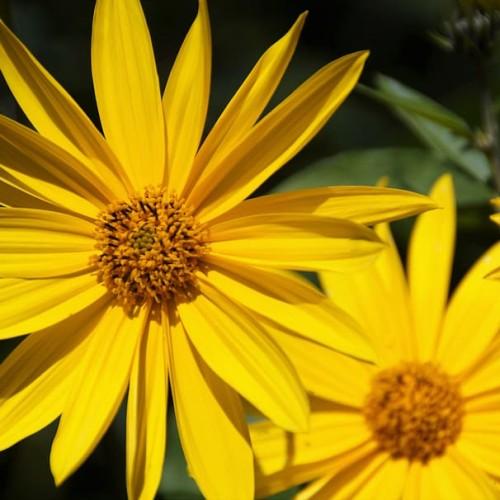
Jerusalem artichoke
Helianthus tuberosus
Cycle:
Herbaceous Perennial
Watering:
Minimum
Hardiness Zone:
3 - 9
Flowers:
Flowers
Sun:
Full sun,part shade
Fruits:
Fruits Ready In Fall
Edible:
Yes
Leaf:
Yes
Growth Rate:
High
Maintenance:
Low
Salt Tolerant:
Yes
Invasive:
Yes
Care Level:
Medium
watering
The Jerusalem artichoke plant should be watered at least once a week. During the summer months, when temperatures are high and breezes are low, it may require more frequent watering. Allow the soil to dry moderately between waterings, and water deeply and thoroughly. Too much water can cause the tuberous roots to rot, so never keep the soil overly wet. It is best to water early in the day rather than late at night, so that the foliage has time to dry out. This helps to prevent fungal issues.
sunlight
The Jerusalem artichoke (Helianthus tuberosus) requires 4 to 6 hours of sunlight on a daily basis in order to thrive and produce a successful harvest. This plant species is best grown in areas that receive full, direct sun for most of the day. Although the sun is very important to the Jerusalem artichoke’s growth and health, it is important to note that this plant species should not be exposed to intense afternoon sun or long periods of hot and dry weather. It is best to provide light shade for the Jerusalem artichoke in times of extreme heat.
pruning
The Jerusalem artichoke is a hardy and drought-tolerant species, and can benefit from occasional pruning. Pruning should be done during the early spring or late fall to ensure the best outcome. Cut out any dead or diseased stems as soon as you notice them. This will help keep your plant healthy, and reduce the spread of any infection or decay. You can also trim away any stems that are long or unruly, or that are shading other areas of your garden. Aim to remove around 1 third of the stems when pruning the Jerusalem artichoke. Try to cut the stems as close to the base as possible. This will promote strong shoots and thick growth next season. If you wait until mid-summer to prune, it can damage the health of your Jerusalem artichoke plants. Pruning at this time may stop the plants from flowering or producing tubers, so it's best to stick to the earlier pruning timeline.
